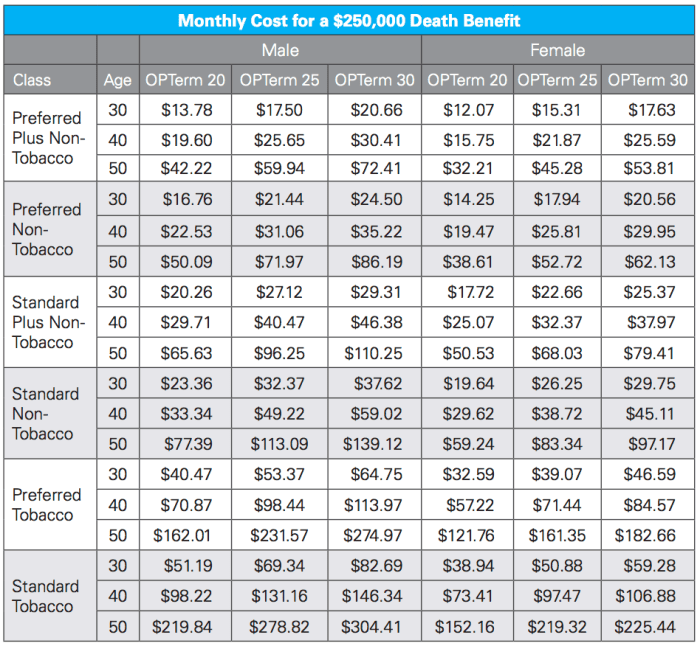Workers Compensation Insurance A Comprehensive Guide
Workers Compensation Insurance takes center stage as a crucial safety net for both employees and employers. This form of insurance not only provides financial protection for workers injured on the job but also shields businesses from potential lawsuits. With its roots tracing back to the early 20th century, workers compensation has evolved to adapt to the changing landscape of the workforce, ensuring that individuals and their families are supported during challenging times.
In this guide, we will explore the various types of workers compensation insurance available, the importance it holds for businesses and employees alike, and the intricate claims process that ensures injured workers receive the benefits they are entitled to. Join us as we delve into the costs associated with these policies, their impact on workplace safety, and the future trends shaping the industry.
Overview of Workers Compensation Insurance
Workers compensation insurance is an essential component of the modern workforce, designed to provide financial support and medical care to employees who suffer work-related injuries or illnesses. This insurance not only protects employees but also benefits employers by limiting their liability in case of workplace incidents. By ensuring that injured workers receive timely assistance, workers compensation plays a crucial role in maintaining a healthy labor environment and promoting employee well-being.The roots of workers compensation insurance can be traced back to the late 19th and early 20th centuries, amid a growing awareness of worker safety and rights.
The first formal workers compensation laws were enacted in Germany in 1884, establishing a system where injured workers could receive benefits without having to prove fault. This model gradually spread to other countries, including the United States, where various states began implementing their own workers compensation programs in the early 1900s. Over time, these systems evolved to provide comprehensive coverage for a wide range of work-related injuries and illnesses.
Key Components of Workers Compensation Policies
Understanding the key components of workers compensation insurance is essential for both employers and employees. These policies typically cover several vital aspects that ensure adequate support for injured workers. The main components include:
Medical Expenses
This coverage pays for necessary medical treatment related to work injuries, including doctor visits, surgeries, rehabilitation, and medications, ensuring that employees receive appropriate care without incurring out-of-pocket costs.
Lost Wages
Workers who are unable to work due to their injuries can receive compensation for lost earnings. This benefit is usually a percentage of their average weekly wage, helping to stabilize their financial situation during recovery.
Disability Benefits
Workers compensation insurance may provide benefits for temporary or permanent disabilities resulting from work-related injuries. This can include total or partial disability benefits based on the severity of the condition and its impact on the employee’s ability to work.
Vocational Rehabilitation
If an employee cannot return to their previous job due to the injury, workers compensation policies often cover vocational rehabilitation services. These services may include job training, career counseling, and assistance in finding new employment.
Death Benefits
In tragic cases where a worker dies due to a work-related accident or illness, workers compensation insurance provides death benefits to the employee’s dependents. This support can help ease the financial burden stemming from the loss.The significance of these components cannot be overstated, as they collectively create a safety net for employees, ensuring that they are supported and protected in the event of workplace incidents.
Workers compensation insurance not only fulfills a legal obligation for employers but also fosters a more secure and motivated workforce.
Types of Workers Compensation Insurance
Workers’ compensation insurance is crucial for safeguarding both employees and employers from the financial ramifications of work-related injuries. Understanding the various types of workers’ compensation insurance available can help businesses make informed decisions that best suit their operations and workforce needs.There are primarily two main types of workers’ compensation insurance: state-funded and private insurance options. Each has its unique features, advantages, and drawbacks that businesses should consider.
Additionally, specialized workers’ compensation policies exist for industries that are deemed high-risk due to the nature of their work.
State-Funded vs. Private Insurance Options
When it comes to workers’ compensation insurance, businesses often have a choice between state-funded and private insurance options. Each has its own processes and financial implications.State-funded workers’ compensation insurance is typically managed by government agencies and is available in states where private insurers are not permitted to operate. This type of insurance is usually mandated by law and offers a safety net for employees in case of workplace injuries.
Here are some key characteristics:
- Generally lower premiums, as the state controls rates.
- Uniform coverage and benefits across the state.
- Limited flexibility in terms of policy customization.
On the other hand, private workers’ compensation insurance is offered by private insurance companies. This type provides businesses with more options and flexibility in terms of coverage. Consider the following aspects:
- Potentially higher premiums based on risk assessment and employee classifications.
- Ability to customize policies to suit specific business needs.
- Access to additional services like safety programs and claims management.
“Choosing the right type of insurance depends on the industry, specific risks, and overall business strategy.”
Specialized Workers Compensation Policies for High-Risk Industries
Certain industries are characterized by higher risks due to the nature of their operations, such as construction, manufacturing, and healthcare. Consequently, specialized workers’ compensation policies are designed to address these unique challenges.High-risk industries often face specific dangers that necessitate tailored insurance solutions. Specialized policies can include:
- Enhanced coverage for specific job functions and workplace environments.
- Higher benefit levels to accommodate potentially severe injuries.
- Additional support services, including rehabilitation and return-to-work programs.
For example, in the construction industry, where physical labor and hazardous conditions are common, a specialized policy might provide extensive coverage for injuries incurred on-site, including provisions for equipment-related injuries or accidents involving heavy machinery. Understanding these types of workers’ compensation insurance options helps employers to better protect their workforce while also managing their own financial risk effectively.
Importance of Workers Compensation Insurance
Workers compensation insurance is a crucial safety net for both employers and employees. It not only helps to protect workers who suffer from job-related injuries or illnesses but also assists employers in managing potential liabilities and fostering a safe working environment. Understanding its importance can lead to more robust workplace practices and a culture of safety and care.
Benefits for Employers
Having workers compensation insurance provides significant advantages for employers. It serves as a financial shield against employee claims, allowing businesses to avoid expensive lawsuits that can arise from workplace accidents. By ensuring that workers are compensated for their injuries, employers can maintain a stable workforce and avoid interruptions in productivity. Key benefits include:
- Financial Protection: Workers compensation insurance covers medical expenses, rehabilitation costs, and lost wages for injured employees, reducing the financial burden on the employer.
- Legal Compliance: Most states require businesses to carry workers compensation insurance, and having it protects employers from legal penalties.
- Employee Morale: Providing coverage can enhance employee morale and trust, promoting a culture of safety and well-being within the workplace.
- Attracting Talent: A comprehensive benefits package, including workers compensation, can attract potential employees and retain existing talent.
Protection for Employees and Their Families
Workers compensation insurance plays a vital role in safeguarding employees and providing peace of mind for their families. When an employee is injured on the job, this insurance ensures that they receive the necessary support to recover and return to work. Notable aspects include:
- Medical Coverage: Employees receive coverage for medical expenses related to their injuries, including doctor visits, hospital stays, and rehabilitation services.
- Income Replacement: If an employee cannot work due to their injury, workers compensation insurance provides wage replacement benefits, ensuring they can meet their financial obligations.
- Death Benefits: In tragic cases where a workplace injury results in death, the insurance provides benefits to the deceased employee’s family, helping them cope during difficult times.
Legal Requirements for Businesses
In many jurisdictions, carrying workers compensation insurance is not just a best practice but a legal requirement. Understanding the obligations can help businesses comply effectively and avoid penalties. Important points regarding legal requirements include:
- State Mandates: Each state has different laws regarding workers compensation insurance; businesses must understand the specific requirements applicable to them.
- Coverage Thresholds: Some states have a minimum number of employees that necessitate workers compensation coverage; businesses must be aware of these thresholds.
- Penalties for Non-Compliance: Failing to provide required coverage can lead to significant fines and legal repercussions for businesses.
Claims Process for Workers Compensation
Filing a workers’ compensation claim is a critical step for employees who experience work-related injuries or illnesses. Understanding the claims process not only helps streamline the experience but also ensures that the injured worker receives the benefits they are entitled to in a timely manner. Each step of the process is important and can vary depending on the jurisdiction and specifics of the incident.The claims process generally consists of several key steps that guide an injured employee from the moment of an accident to the resolution of their claim.
Below is a flowchart that illustrates this process:
1. Incident Occurrence
The employee sustains a work-related injury or illness.
2. Report the Incident
The employee must report the incident to their supervisor or HR as soon as possible, typically within 24 hours.
3. Seek Medical Attention
The employee should seek necessary medical care and keep documentation of all treatments.
4. File a Claim
The employee completes and files the workers’ compensation claim form, providing all relevant details about the incident.
5. Claim Review
The employer’s insurance company reviews the claim, which may involve further investigation or additional documentation.
6. Claim Approval or Denial
The insurance company approves or denies the claim based on the evidence presented.
7. Receive Benefits or Appeal
If approved, the employee receives benefits. If denied, the employee may consider appealing the decision.
Steps Involved in Filing a Workers Compensation Claim
Understanding each step in detail helps in navigating the claims process efficiently:
Incident Occurrence
Accidents can happen in various work environments. Whether it’s a slip and fall, machinery accident, or exposure to hazardous substances, documenting the specifics immediately is crucial.
Report the Incident
Timely reporting is essential. Most states require that incidents are reported within a certain timeframe, usually 30 days. Failure to do so can result in claim denial.
Seek Medical Attention
Getting the right medical care not only aids recovery but also creates a record that supports the claim. It’s important to inform the healthcare provider that the injury is work-related.
File a Claim
The injured employee must fill out the designated claim form provided by the employer or insurance company. This form will require details such as the nature of the injury, the time and place of the incident, and the names of any witnesses.
Claim Review
Once submitted, the claim enters a review phase. The insurance company may reach out for additional information or clarification on the circumstances surrounding the claim.
Claim Approval or Denial
After reviewing the claim, the insurer will notify the employee of their decision. If the claim is approved, the employee can start receiving benefits, including medical expenses and lost wages.
Receive Benefits or Appeal
If the claim is denied, the employee has the right to appeal the decision. This often involves gathering additional evidence and potentially a hearing before a workers’ compensation board.
Common Challenges Faced During the Claims Process
Navigating the workers’ compensation claims process can be challenging, and there are several common obstacles that injured workers might encounter:
Delayed Claims Processing
Claims can take time to process, which can cause financial stress for injured employees. To mitigate this, maintaining clear communication with the insurance adjuster and following up regularly can be beneficial.
Insufficient Documentation
A lack of proper documentation can lead to claim denials. It’s essential to keep detailed records of all medical visits, treatments, and any correspondence with the employer or insurance company.
Disputed Claims
Sometimes, employers or insurers may dispute the claim, arguing that the injury did not occur at work or that it is not compensable. In such cases, gathering witness statements and other forms of evidence can be crucial in supporting the claim.
Understanding Legal Rights
Employees may not be fully aware of their rights under workers’ compensation laws. Seeking advice from a lawyer specializing in workers’ compensation can help clarify these rights and assist in navigating complex situations.
Appeals Process
If a claim is denied, the appeals process can be daunting. Being informed about the steps involved and obtaining necessary evidence to strengthen the appeal can lead to a better outcome.
“Documentation is key in the workers’ compensation claims process. Proper records can make the difference between a successful claim and a denial.”
Costs Associated with Workers Compensation Insurance

Source: americanyawp.com
Understanding the costs associated with workers compensation insurance is crucial for businesses aiming to protect their employees while managing their financial health. The premiums associated with this type of insurance can significantly impact a company’s budget, making it essential to grasp how these costs are calculated and what strategies can be employed to mitigate them. Premiums for workers compensation insurance are primarily determined by several factors including the nature of the business, the number of employees, the state regulations, and the company’s claims history.
Each industry has a specific classification code that suggests a rate based on the level of risk associated with that field. The more hazardous the work environment, the higher the premium is likely to be. Additionally, businesses with a history of high claims may face increased rates, as insurers see them as higher risk.
Calculation of Workers Compensation Premiums
The calculation of workers’ compensation premiums involves a combination of the business’s payroll, the classification of jobs, and the experience modification rate (EMR). Here’s a breakdown of these components:
- Payroll: The total payroll is a significant factor; higher payrolls generally lead to higher premiums since more employees can mean a higher risk of injury.
- Classification Codes: Each employee is assigned a classification code that reflects the risk of injury associated with their specific job duties. Insurers use these codes to determine the appropriate rate to apply to the payroll.
- Experience Modification Rate (EMR): This is a factor that adjusts premium costs based on the business’s claims history in comparison to industry averages. A lower EMR can lead to discounts on premiums, while a higher EMR can increase costs.
Strategies to Manage and Reduce Workers Compensation Costs
Businesses can implement several strategies to effectively manage and lower their workers compensation costs. By actively engaging in safety programs and training, companies can reduce the likelihood of workplace injuries, which in turn can lead to lower premiums. Here are some practical methods:
- Implement Safety Training: Regular training sessions for employees on workplace safety can significantly reduce accidents and injuries.
- Maintain a Safe Work Environment: Regular inspections and maintenance of equipment and workspaces help identify and mitigate potential hazards.
- Return-to-Work Programs: Establishing a program that allows employees to return to work in a modified capacity post-injury can reduce the duration of claims.
- Review Insurance Policies Annually: Regularly reviewing and comparing insurance policies can help ensure a business is getting the best rates and coverage for its needs.
Financial Implications of Inadequate Coverage
Not having adequate workers compensation coverage can lead to severe financial consequences for a business. In cases of workplace injuries, the costs can far exceed what a company might save by opting for minimal coverage. Here are key implications of insufficient coverage:
- Out-of-Pocket Expenses: If an employee is injured and the coverage is insufficient, the business may have to cover medical bills, rehabilitation costs, and lost wages directly.
- Legal Liability: Underlying statutory requirements can expose a business to lawsuits from injured employees seeking damages, which can be financially devastating.
- Increased Premiums: A history of claims can lead to higher premiums in the future, creating a long-term financial burden.
Impact of Workers Compensation Insurance on Workplace Safety

Source: pikist.com
Workers compensation insurance plays a significant role in shaping workplace safety programs. It not only provides financial protection for employees who suffer work-related injuries but also incentivizes employers to create a safer work environment. The relationship between workers compensation insurance and workplace safety is intertwined, as effective safety protocols can lead to fewer claims and reduced insurance costs.The correlation between workers compensation insurance and workplace safety programs is crucial.
Businesses that prioritize safety often experience a decline in accident rates, which subsequently lowers the frequency of claims made against their insurance policies. When employers invest in comprehensive safety training and initiatives, it not only protects employees but also enhances the company’s overall productivity.
Strategies for Enhancing Safety and Reducing Claims
Several strategies can be implemented to enhance workplace safety and, in turn, reduce claims associated with workers compensation insurance. These strategies focus on proactive measures that prioritize employee well-being and minimize risks.
1. Regular Safety Training
Conducting ongoing safety training ensures that employees are aware of potential hazards and the best practices to avoid them. This training should be tailored to specific job roles and updated regularly to reflect any changes in procedures or equipment.
2. Safety Audits
Performing routine safety audits helps identify risks and areas for improvement in the workplace. By addressing these hazards proactively, employers can significantly reduce the likelihood of accidents and injuries.
3. Encouraging Reporting
Creating a culture where employees feel comfortable reporting unsafe conditions without fear of reprisal encourages proactive safety measures. An anonymous reporting system can enhance this process, allowing for the identification of potential dangers before they lead to accidents.
4. Ergonomics Programs
Implementing ergonomic assessments helps reduce musculoskeletal disorders, which are common workplace injuries. By designing workstations that fit employees’ needs, businesses can minimize strain and enhance comfort.
5. Clear Safety Protocols
Establishing and communicating clear safety protocols ensures that all employees understand the procedures to follow in case of an emergency or when faced with hazardous situations. This clarity can prevent confusion and injuries during critical moments.
Influence of a Culture of Safety on Workers Compensation Costs
A strong culture of safety within an organization can significantly affect workers compensation costs. When safety is ingrained in the company’s values, it can lead to cost savings through reduced claims and lower insurance premiums. When employees perceive that their safety is prioritized, they are more likely to adhere to safety practices, reducing accident rates. Statistics show that companies with robust safety cultures can experience up to a 50% reduction in incident rates over time, directly impacting their insurance claims.
Furthermore, an investment in safety not only leads to lower costs but also enhances employee morale and retention. When workers feel safe and valued, their productivity tends to increase, creating a win-win situation for both the employees and the employer.
“Investing in a safety-first culture can reduce workers compensation claims and create a more cohesive workforce.”
Future Trends in Workers Compensation Insurance

Source: africanarguments.org
The landscape of workers compensation insurance is evolving rapidly, driven by technological advancements, changing workplace dynamics, and emerging healthcare practices. As we look to the future, it is essential to understand these trends and their implications for employers and employees alike. This section explores significant developments such as telemedicine, the impact of technology on claims administration, and potential legislative changes that could reshape workers compensation insurance.
Telemedicine in Workers Compensation
Telemedicine is becoming increasingly vital in the realm of workers compensation insurance. This innovative approach allows injured workers to receive medical consultations remotely, reducing the need for in-person visits. The benefits of telemedicine include:
- Accessibility: Workers can easily connect with healthcare providers from the comfort of their homes, making it especially useful in rural areas or during emergencies like the COVID-19 pandemic.
- Cost-Effectiveness: Telemedicine often reduces transportation costs for both employers and employees, and it can decrease overall medical expenses.
- Faster Recovery: Quick access to medical consultation can lead to faster intervention and recovery times, enhancing employee well-being and reducing downtime.
Technology’s Impact on Claims Administration
The administration of workers compensation claims is being transformed by technology, leading to more efficient processes. Key technological advancements include:
- Claims Management Software: Automation of claims processing allows for real-time tracking and management, improving accuracy and reducing fraud.
- Data Analytics: Utilizing big data helps insurers assess risks better, anticipate claims, and tailor policies to meet the needs of various industries.
- Mobile Applications: Employees can report injuries and track their claims through mobile apps, streamlining communication and expediting the claims process.
Legislative Changes Affecting Workers Compensation Insurance
Future legislative changes may significantly impact workers compensation insurance. Potential directions include:
- Increased Coverage Requirements: As workplace hazards evolve, lawmakers may introduce regulations that expand coverage for specific risks, particularly in high-risk industries.
- Stronger Protections for Workers: Legislative measures could focus on enhancing protections for gig workers and independent contractors, ensuring they have access to necessary benefits.
- Regulatory Reforms: States may revise their regulatory frameworks to simplify the claims process and enhance service delivery, responding to feedback from both employers and employees.
“The integration of telemedicine and technology into workers compensation is poised to redefine how claims are managed, ultimately benefiting workers and employers alike.”
Outcome Summary
In conclusion, Workers Compensation Insurance is more than just a legal requirement; it is a vital component of a safe and supportive workplace. By understanding the nuances of this insurance, businesses can foster a culture of safety, ultimately benefiting both their employees and their bottom line. As we look ahead, staying informed about emerging trends and legislative changes will be key in navigating the complexities of workers compensation insurance effectively.
Clarifying Questions
What is the purpose of Workers Compensation Insurance?
It provides financial protection for employees injured on the job and helps employers manage liability risks.
How are Workers Compensation Insurance premiums calculated?
Premiums are based on factors like the type of industry, the size of the workforce, and the company’s claims history.
Do all businesses need Workers Compensation Insurance?
Most states require businesses with employees to carry workers compensation insurance, though specific regulations may vary.
Can independent contractors obtain Workers Compensation Insurance?
Yes, independent contractors can purchase their own coverage, but it’s not always mandatory unless stipulated in a contract.
What should an employee do if their workers compensation claim is denied?
Employees can appeal the decision through the appropriate state agency or seek legal assistance to review their case.





